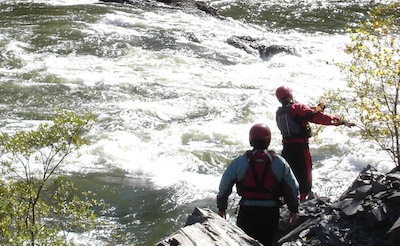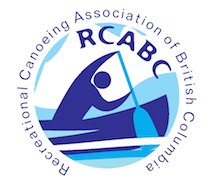
We enjoy looking forward the many positives of canoeing and being out in the wilderness, but it is worthwhile to identify the hazards that you may encounter and take reasonable steps to prepare for them.
What are the specific hazards on your trip?
In British Columbia the number one hazard is cold water and hypothermia (see Cold Water Preparedness section). You lose heat 25 times faster in the water than in air and moving water robs your heat much more quickly. Hypothermia is a lowering of the body's core temperature and loss of strength, dexterity and ability to think clearly. A large percentage of drownings in BC are a result of hypothermia. Keep your eye on the weater and know the water temperature. How likely is a quick rescue? Assess this hazard carefully!
On lakes, wind can be a significant hazard. In BC, lakes are commonly in mountain valleys and long and narrow and wind can create significant waves that can cause you to lose control of the canoe or fill your canoe. Violent wind and large waves can develop in a few minutes, with little warning. Travelling in the mornings tends to be calmer and winds often pick up around 1pm, but of course it varies. Staying close to shore is the best strategy and choose when you do crossings carefully. Learn to understand weather patterns and trends and if possible stay in touch with wind forecasts. Trim your canoe to take advantage of the weathervane effect. If you are heading into the wind make it slightly bow heavy or for a tail wind make it slightly stern heavy. The lighter end tends to blow downwind reducing the need for steering strokes. For a side wind, the stern paddles on the downwind side to make it easier to keep the bow from being blown downwind.
Other lake hazards can be boat traffic, shallow areas that cause dangerous waves, mud and sand shallows, and sometimes rocks or logs just below the surface can surprise a canoeist. Get information on hazards for the lake you are canoeing on from locals, clubs, maps or guidebooks.
Ocean canoeing is possible and enjoyable in sheltered waters but some canoeists even challenge the open waters of the Pacific coast. Hazards are tidal currents, winds, waves, surf, rugged shorelines, cold water, large boat traffic and the diffuculty of rescues in this environment. An Ocean Canoeing course is highly recommended if you're interested in ocean paddling.



















